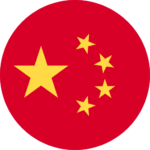
By Lukas Fiala
While perhaps not on the radar of some China watchers, this week’s China International Aviation & Aerospace Exhibition – or Zhuhai Airshow for short – marks an important inflection point in China’s rise as a great power. Taking place biannually in the south of China, this time around, one of the major highlights included the unveiling of China’s second stealth fighter – the J-35A, rendering China the second country after the U.S. to have two 5th generation stealth fighters.
The debut of the J-35A demonstrates China’s military prowess and its growing ability to underwrite claims to regional leadership with commensurate hard power. But it also shows the transformation of Zhuhai from what one veteran journalist in a conversation once jokingly referred to as a “lemonade stand” when the airshow first opened its doors in 1996 towards an internationally recognized trade show proportionate with China’s status as a great power.
The numbers speak for themselves. Since 1996, the number of trade visitors in Zhuhai has increased more than seven-fold, topping out at 150,000 in 2018 before plummeting to 100.000 during 2021 and 2022, the two iterations of the show affected by COVID-19. Over the same time period, the value of agreements signed at Zhuhai increased from $2 bn to almost $40 billion in 2022.
Of course, not all these deals are related to defense. But over the last ten years, military technology has become a more prominent part of the exhibition. With all major Chinese arms manufacturers present at Zhuhai to reconnect with established and meet new customers, the show has become a key opportunity for China’s state-owned defense industry to signal their allegiance to the Communist Party’s military and defense modernization agenda, a pet project of Xi Jinping who has spent significant attention and energy on transforming the PLA into a military capable of fighting and winning wars.
But the exhibition also showcases China’s growing defense-related and/or dual-use industrial base, including a host of relatively young private companies. As a result of ambitions to integrate military and economic development through policy frameworks such as military-civil fusion, Zhuhai is quickly becoming a focal point of China’s increasingly dynamic defense-industrial base, especially in certain sub-sectors such as unmanned systems across air and naval domains.
With Russia bogged down by its war in Ukraine, China is thus readily emerging as an increasingly sophisticated source of military equipment. By inviting foreign military delegations to Zhuhai, the airshow serves as both a marketplace for military equipment and a relationship-building platform with senior military officers from countries that Beijing might want to consolidate security relationships.
These include countries from China’s peripheral neighborhood, such as Pakistan, which has long entertained military-technical relationships with China, but also delegations from regions further afield. In an interview with Global Times, for instance, an officer from Niger’s Air Force complimented exhibited fighter jets and transport aircraft. The optics could hardly be stronger: After the 2023 coup, Niger’s military junta forced the U.S. to withdraw from its drone base in the country and signed a $400m agreement with one of China’s state-owned oil majors earlier this year in response to international sanctions.
While China still lags behind more established suppliers, such as the U.S., in the global arms market, it is undeniable that China’s defense industry has undergone a notable transformation that has put China on the map of major arms exporters. And Zhuhai is once again offering us a glimpse into a future in which countries from across the Global South may increasingly see China as a one-stop-shop for modernizing their armed forces.
Lukas Fiala is the project head of China Foresight at LSEIDEAS.









